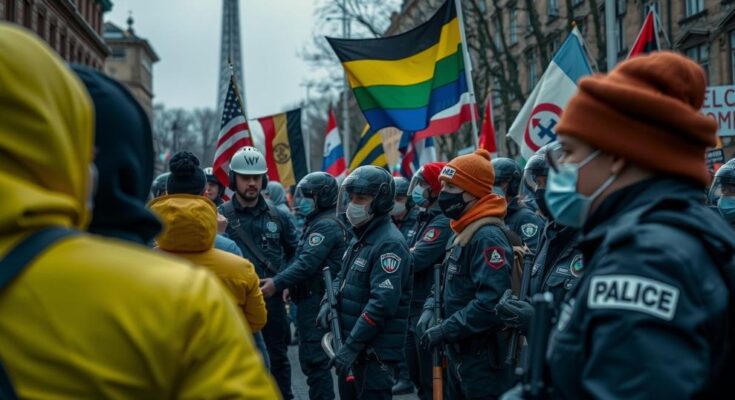COP29 activists faced significant challenges, feeling constrained by stringent rules and restrictions. Despite their efforts, including the ‘Pay Up’ banner, their protests went largely unnoticed. Activists expressed frustration over the diminishing visibility of civil society compared to previous gatherings, and the struggle for effective protests continues amidst a backdrop of growing regulations that limit their ability to challenge specific entities directly.
At COP29 in Baku, Azerbaijan, activists faced significant challenges in making their voices heard amidst stringent regulations governing demonstrations. Despite extensive planning and creativity leading up to the summit, activists reported feeling increasingly stifled by the rules imposed by the United Nations and the host country, which limited their capacity to protest effectively. Many activists, including Bianca Castro from Portugal, expressed concern over the diminishing presence and impact of civil society compared to previous years, when protests were more dynamic and visible. Activists crafted a substantial banner reading “Pay Up” to draw attention to climate finance issues, though their visibility was limited due to restrictions regarding where protests could occur within the largely empty stadium. They highlighted their frustrations over the growing trend of stricter rules imposed on climate activism, limiting the specific criticisms they could make towards individual nations and corporations. Rachitaa Gupta, a climate justice advocate, emphasized the essential role of voices from the Global South in advocating for necessary financial commitments at the negotiations. The restrictions have prompted creativity among activists, who, despite facing obstacles, have developed innovative ways to express their messages without violating regulations. This year, they created a life-sized snake for a demonstration entitled “Weed Out the Snakes,” emphasizing the removal of polluting entities from climate discussions. Dani Rupa from The Artivist Network noted that this creative outlet serves as a critical means of engagement amid the ongoing suppression of direct protest actions. While the UNFCCC claims to support safe civic spaces at COPs, the activists contended that the limitations placed upon them this year significantly detracted from the efficacy of their protests. In contrast to previous generations of COPs characterized by mass mobilizations, current regulations restrict mobilization to certain areas within the venue, making impactful actions increasingly difficult. Sathananthar from The Artivist Network voiced that every action has to be fiercely fought for, revealing a growing frustration within the climate activist community as negotiations for their rights become more arduous.
The backdrop of the ongoing protests at COP29 reveals a broader trend in which activists face increasing limitations on their ability to freely express dissent and advocate for climate justice. Historically, climate negotiations have been marked by vibrant civil society engagement and outspoken activism, but recent years have seen a shift towards more restrictive practices by both UN organizers and host nations. This dynamic has incited a growing sense of urgency among activists, as they seek innovative means to convey their messages despite the regulatory boundaries that inhibit their original strategies and goals.
In conclusion, COP29 showcased the tensions between the aspirations of climate activists and the constraints imposed by governing bodies. With mounting frustrations and the specter of dwindling civic engagement, activists are compelled to adapt their strategies while grappling with the realities of limited venues for action. As voices clamoring for climate justice become increasingly muffled, the urgent call for governmental accountability and a commitment to finance remains ever-present, necessitating continued advocacy and creative expression. The complexities surrounding the COP framework highlight the critical need for a more open and participatory approach at future climate negotiations.
Original Source: apnews.com




